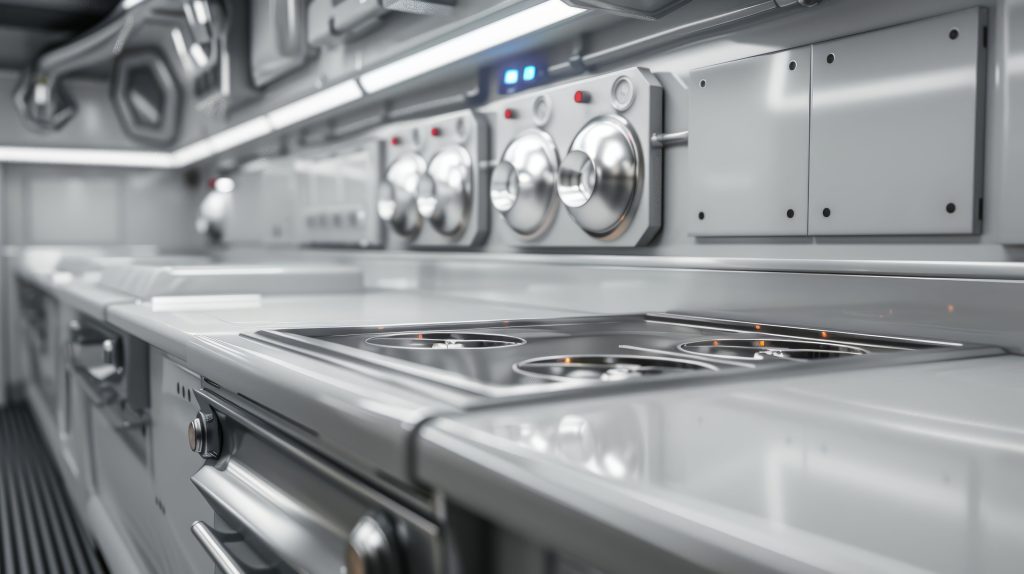
Running a commercial kitchen isn’t for the faint-hearted. It’s heat, blades, pressure, noise — and if you’re not on your toes, it’s lawsuits and foodborne outbreaks waiting to happen. You can’t just wing it in a place where grease meets gas and one cut can send a sous-chef home for good.
The only way it works? By treating kitchen safety like it’s part of the menu.
And it’s not just “don’t slip” and “wear gloves.” We’re talking about the entire rhythm of the kitchen — how people move, how tools are handled, how raw chicken never even dreams of touching a salad bowl.
The Kitchen Is No Place for Chaos
Let’s get this straight. You can’t have a fully operational kitchen without safety rules baked into every shift. There’s too much going on — open flames, boiling stock, a slicer that could amputate a thumb. Fryers are another beast — one slip and you’re dealing with oil burns and fire risk. These units demand strict protocols and regular checks. This isn’t some cute home cooking show.
You need structure.
Start here:
- Know your gear. Don’t let someone near the meat slicer unless they know exactly what they’re doing.
- Train everyone like they’re staying forever — even if they quit next week.
- Labeling and separating your ingredients like cross-contamination is a criminal offense (because honestly, it might as well be).
Hygiene Is Not a Suggestion
Some kitchens think a spray bottle and an occasional mop count as hygiene. That’s lazy. Commercial kitchen hygiene is a system. It needs to run deeper than just wiping surfaces when someone from management is around.
What keeps bacteria at bay?
- Color-coded cutting boards. One for meat, one for veg, one for raw fish. Follow this religiously or be prepared for a salmonella situation.
- Cleaning schedules that aren’t “when we remember.”
- Consistent handwashing, not just a rinse under cold water before plating.
And those boards you’ve had since 2009? Toss them. If the grooves look like a topographical map, they’re probably growing life forms.
Rules Don’t Kill Creativity. They Save It.
People think rules stifle creativity. Not in kitchens. Restaurant kitchen safety rules let chefs focus on creating — not worrying about whether someone’s going to get electrocuted by plugging in a mixer next to a sink.
Make it standard:
- Post safety guidelines where even the dish can see them.
- Review them weekly like your health rating depends on it — because it does.
- Fire extinguishers, bandages, gloves? Visible, reachable, stocked.
That’s commercial kitchen health and safety at its most basic. You don’t get a Michelin star if your kitchen’s shut down for violations.
Want Excellence? Don’t Skimp on Safety.
A clean kitchen runs smoother. A safe kitchen works faster. And a team that feels looked after stays longer.
If you’re not doubling down on food safety, hygiene, and equipment protocols, you’re leaving things to chance. And kitchens are not where chance plays well.
A few non-negotiables:
- Chopping board hygiene. Replace regularly; follow the colors; clean thoroughly.
- Personal hygiene. No fake nails, no perfume, no “I forgot my apron.”
- Equipment checks. Fridges, thermometers, everything — log it, check it, fix it.
No one should be guessing whether that meat is cold enough to serve or if the fryer’s about to explode.
At the end of the day, food and kitchen safety is less about rules and more about respect — for the space, the ingredients, the people working beside you. Safety isn’t the opposite of creativity; it’s the framework that lets it thrive.
Messy kitchens make drama. Safe kitchens make magic.